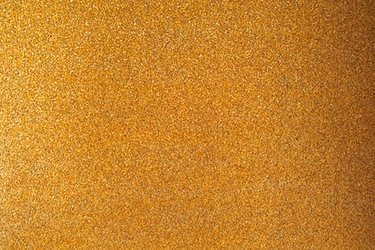
Acrylonitrile butadiene styrene, or ABS plastic, is used to create all sorts of molded products, including musical instruments, plastic piping and even some types of golf club heads. Unfortunately, because ABS plastic is nonporous and slick, it is not ideal for paint adhesion. Without proper surface prep, paint will peel and chip away from ABS relatively soon after application. Before you attempt to paint ABS plastic, you will need to condition the surface to accept the paint, or you will end up with disappointing results.
Step 1
Wash the ABS plastic with soap and rags. Rinse away all soapy residue to prevent problems with adhesion. Allow the ABS to dry completely.
Video of the Day
Step 2
Load a palm sander with 300-grit sandpaper. Abrade the ABS to promote adhesion by lightly sanding it. Sand the plastic until it feels slightly rough to your fingertips.
Step 3
Wipe down the ABS with a tack cloth.
Step 4
Protect any parts of the ABS plastic you want left unpainted by covering them with tape.
Step 5
Lay the ABS plastic on top of a drop cloth.
Step 6
Apply primer to the ABS in brief, intermittent bursts. Do not apply in a long, steady, consistent stream as this may lead to runs.
Step 7
Allow the ABS to dry for three hours, and then apply two coats of acrylic spray paint to the plastic using the same application technique you used in step six. Allow two hours of dry time between each coat.
Video of the Day